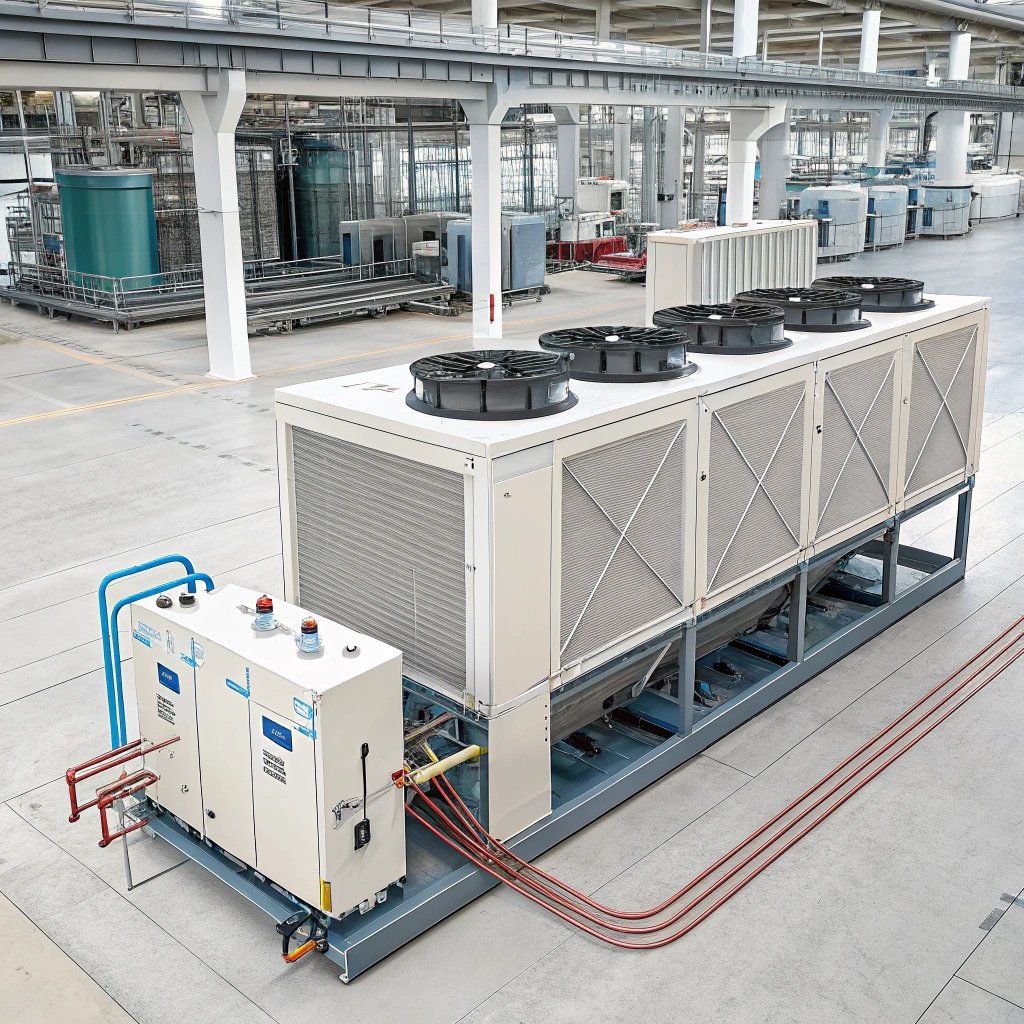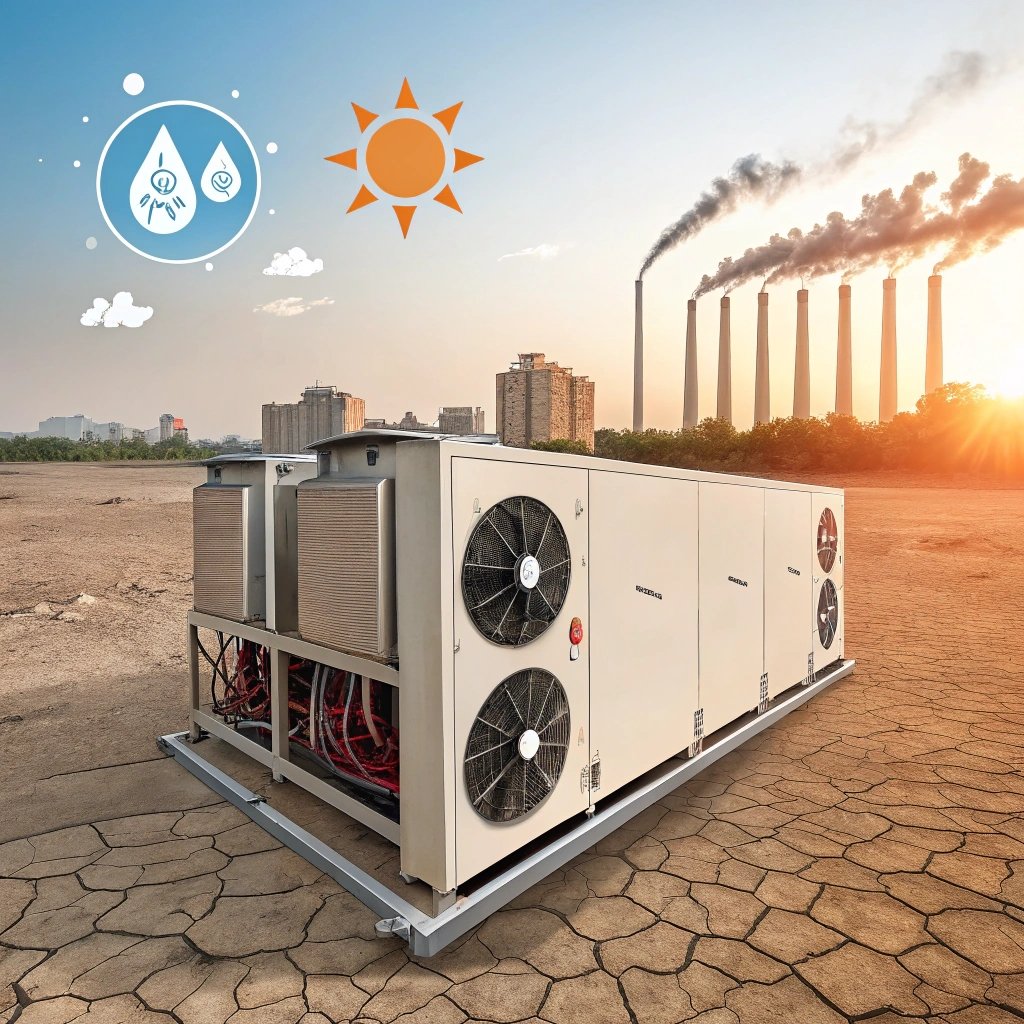How does an economiser work in chillers?

![]
leading paragraph:
Economisers play a crucial role in improving the energy efficiency of chillers. But how exactly do they work, and why are they important?
featured Paragraph:
An economiser in a chiller recycles some of the waste heat from the system to reduce energy consumption. It allows the chiller to operate more efficiently by pre-cooling the refrigerant, which reduces compressor workload and saves energy.
Transition Paragraph:
Understanding how an economiser improves the efficiency of a chiller can help businesses optimize their cooling systems and reduce operational costs. Let’s dive into the specifics of its function.
What is the role of an economiser in chillers?
leading paragraph:
Chillers are central to cooling many industrial and commercial systems, but they can consume a lot of energy. Here, economisers step in to improve efficiency by reusing waste heat.
featured Paragraph:
An economiser captures some of the heat that is otherwise wasted during the chiller’s operation and reuses it to pre-cool the refrigerant. This reduces the amount of energy needed for compression and helps improve overall system efficiency.

Dive deeper Paragraph:
An economiser works by utilizing a heat exchanger that transfers heat from the refrigerant's discharge side (which would otherwise be wasted) to the refrigerant intake side. This reduces the need for the compressor to do all the work of increasing the refrigerant's pressure, which is energy-intensive. The economiser essentially pre-cools the refrigerant, which means the compressor doesn't have to operate as hard. This results in lower power consumption and better overall efficiency.
The use of economisers is especially beneficial in systems where large temperature differences exist, such as in industrial refrigeration or HVAC systems. By lowering the compressor’s energy demand, economisers reduce both the electrical consumption and the associated costs.
Economisers are typically used in vapor compression refrigeration systems, including air-cooled and water-cooled chillers. In a water-cooled chiller, for example, the economiser helps maintain lower compressor discharge temperatures, preventing the system from overheating.
Economisers not only contribute to energy savings but also extend the lifespan of the chiller by reducing the mechanical stress on the compressor. The reduced workload also leads to fewer maintenance needs and potentially fewer breakdowns over time. This is especially important for industries with critical cooling requirements where downtime is costly.
How to integrate an economiser into your chiller system?
leading paragraph:
Integrating an economiser into a chiller system requires proper planning and understanding of the system's needs. How does one make the most of it?
featured Paragraph:
Adding an economiser involves selecting the right heat exchanger and integrating it into the system's refrigerant loop. It requires ensuring that the system's existing components can handle the modified flow rates and pressures without causing issues.
Dive deeper Paragraph:
When integrating an economiser, it’s important to evaluate the system’s load profile and determine where the heat recovery can be most effective. Some systems may need additional components like a secondary heat exchanger or control valves to optimize the economiser’s operation. The key is ensuring that the economiser operates in synergy with the other parts of the chiller system.
Moreover, regular maintenance is essential to keep the economiser functioning at its best. This includes monitoring the heat exchanger for fouling or damage, which can reduce its efficiency. It’s also crucial to periodically check the refrigerant flow rates and pressure levels to ensure that the economiser is not putting too much strain on the system.
In some cases, especially with older chiller models, retrofitting an economiser can be complex and might require specialized modifications. However, the long-term savings on energy consumption and maintenance costs often justify the investment.
Conclusion
Economisers are a valuable tool for enhancing chiller efficiency, reducing energy consumption, and prolonging equipment life. Understanding their role and integration is key to optimizing your chiller system.
How do water-cooled chillers work?

leading paragraph:
Water-cooled chillers are widely used in industrial and commercial applications. But how do they actually work to provide efficient cooling?
featured Paragraph:
Water-cooled chillers use water as a heat transfer medium. The chiller absorbs heat from the building or process and transfers it to the water, which is then cooled in a separate cooling tower.
Transition Paragraph:
Let’s explore how this process works in more detail and why water-cooled chillers are often chosen for large-scale cooling systems.
What is the working principle of a water-cooled chiller?
leading paragraph:
Water-cooled chillers are essential for many industrial applications. But what is the underlying process that makes them so effective at cooling large systems?
featured Paragraph:
The process begins with the chiller’s evaporator, where water is cooled as it absorbs heat. The heat is then transferred to a refrigerant, which is further cooled by water circulating in a cooling tower.

Dive deeper Paragraph:
Water-cooled chillers operate based on a closed-loop refrigeration cycle, which involves four main components: the evaporator, compressor, condenser, and expansion valve. The chiller absorbs heat from a space or process fluid via the evaporator. The evaporator is a heat exchanger that uses refrigerant to absorb and carry away the heat.
Once the refrigerant absorbs heat, it travels to the compressor, which increases its pressure and temperature. The high-temperature refrigerant then passes through the condenser, where water is used to cool and condense the refrigerant. The water absorbs the heat and carries it away to the cooling tower.
The cooling tower plays a crucial role by dissipating the absorbed heat into the atmosphere. The tower circulates water through a heat exchanger, where it is cooled by air before being sent back into the system. The chilled water is then recirculated through the system, providing cooling to the desired area or process.
One of the major advantages of water-cooled chillers is their ability to provide high-efficiency cooling in large installations. The cooling tower allows them to release heat effectively, making them ideal for applications with a significant heat load, such as in manufacturing, large office buildings, and data centers.
Furthermore, water-cooled chillers are often more efficient than air-cooled chillers, especially in warmer climates, as they rely on the cooling tower’s ability to dissipate heat, rather than relying on ambient air temperature. This makes them a reliable choice for industries that require continuous, reliable cooling.
Key benefits and challenges of water-cooled chillers
leading paragraph:
Water-cooled chillers offer many benefits, but there are also challenges to consider. Let’s look at both sides of the equation.
featured Paragraph:
The main benefits of water-cooled chillers are their high efficiency and ability to handle large cooling loads. However, challenges like water quality and maintenance requirements need to be considered when deciding on this system.
Dive deeper Paragraph:
The primary benefit of water-cooled chillers is their ability to cool large systems with high efficiency. The cooling tower enables efficient heat dissipation, and water as a cooling medium has excellent thermal conductivity, allowing the chiller to operate effectively even in larger systems.
However, there are some challenges. The need for a cooling tower and water circulation system can increase installation and maintenance costs. Additionally, the quality of water used in the system is crucial. Impurities in the water can lead to scaling and corrosion within the system, reducing its efficiency and lifespan.
Maintenance is another consideration, as regular cleaning and inspection of the cooling tower and water treatment systems are essential to ensure optimal performance. The water treatment process, such as adding chemicals to prevent scale and algae build-up, requires attention and adds to the operational costs.
Despite these challenges, water-cooled chillers are still widely used in industries that require large-scale, continuous cooling. With proper maintenance and water management, they can provide reliable and efficient cooling solutions for many years.
Conclusion
Water-cooled chillers are highly efficient cooling solutions for large-scale applications, offering significant advantages in heat dissipation. However, their installation and maintenance require careful consideration.
Insights:
Incorporating economisers into chiller systems can significantly improve energy efficiency and reduce operating costs. When combined with the robust cooling capabilities of water-cooled chillers, businesses can enjoy long-term savings and reliability. It's essential to keep up with proper maintenance practices and integrate the right technologies to optimize performance.




